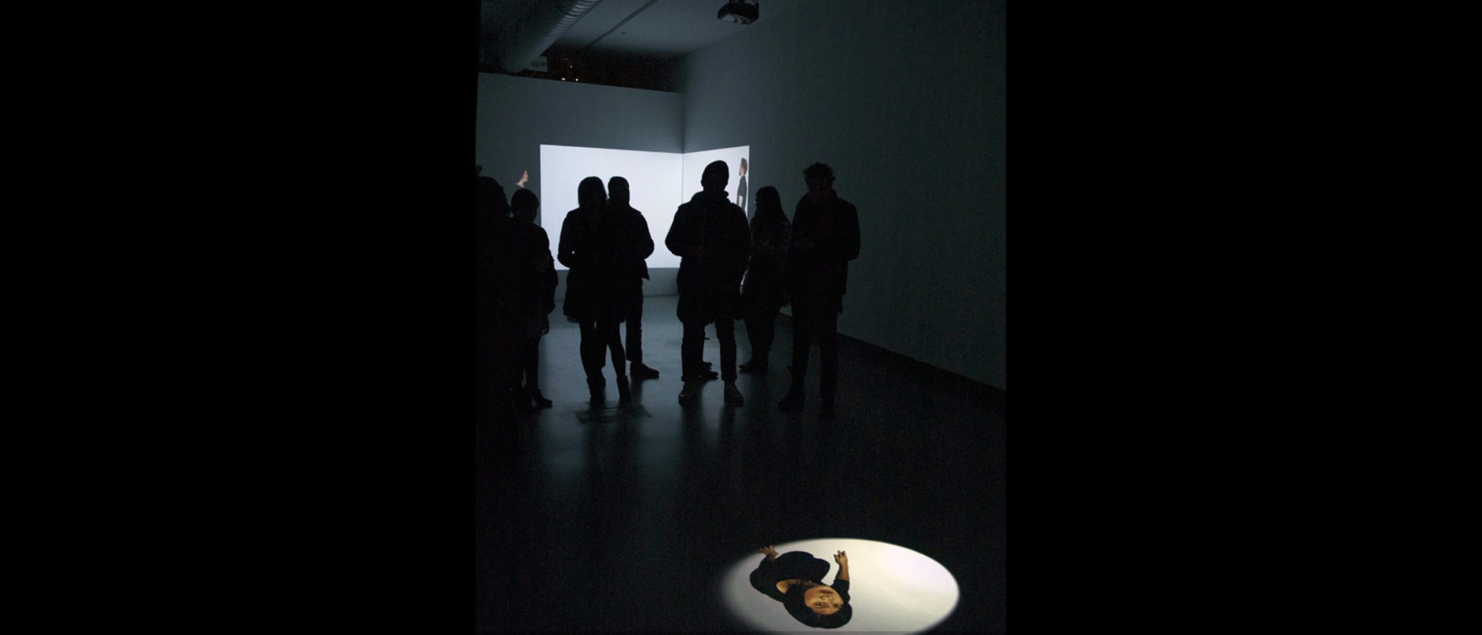Washington’s best art gallery exhibitions of 2012
by Mark Jenkins
Washington’s best art gallery exhibitions of 2012
As the U.S. economy continued the long slog of the slowest recovery since the 1930s, Washington’s commercial art scene neither expanded nor contracted significantly in 2012. But the leading galleries, supplemented by nonprofit spaces and pop-up exhibitions, continued to present extraordinary shows. After reviewing about 200 local exhibitions in 2012 — and seeing many more than that — selecting the best was daunting. These 10 were certainly among the strongest, but they also represented the impressive breadth of art shown this year in a city open to both classicism and conceptualism, and always interested in politics.
Colby Caldwell: Gun Shy
March 24-May 25 at Hemphill Fine Arts
The Maryland artist’s photographs of avian remains, abandoned duck blinds and used shotgun shells, supplemented by colorful digital abstractions, were evocative of loss and decay: dwindling recollections as much as environmental ravages. But Caldwell’s scanner-made, seven-foot-high images (also shown in “Spent” at Civilian Art Projects) were equally notable for their beauty. The crisp detail, glossy surfaces and richly weathered, often metallic hues — plus the sheer scale — gave the photos the power of vast canvases.
CTRL+P: New Directions in Printmaking
June 22-Sept. 16 at Arlington Arts Center
Customary expectations for prints were literally blown up by this wide-ranging group exhibition, which featured much wall-size work. Despite its keyboard-inspired name, this was not a show of computer-generated prints. Beside more recent techniques and technologies, the selection included examples of such traditional forms as woodcut and letterpress. The attitude, however, was experimental and contemporary.
Joyce Yu-Jean Lee: Passages
Feb. 11-March 10 at Hamiltonian Gallery
Using photographs and video, this local artist focused on windows, skylights and peepholes. Exhibited in a darkened room and illuminated by pinpoint spotlights, her small, glossy photos showed luminous details from such notable structures as Rembrandt’s house and the Great Wall of China. These were supplemented by two video-performance pieces that depicted people inside small areas of light, offering mini-narratives of entrapment and potential escape.
Cynthia Connolly: Letters on Top of Buildings
May 11-June 16 at Civilian Art Projects
An exemplary marriage of subject and form, these photographs memorialized early- to mid-20th-century signs and were made with black-and-white film — both vanishing phenomena. Connolly is known for her images of the lonely structures of blue-highway America. These pictures were more urban, depicting D.C., New York and New Orleans, but they were also wide open: They gazed upward, capturing mostly air. Arranged carefully on the wall, the suite suggested a magazine layout or L’Enfant’s street grid.
Jae Ko: Recent Sculpture
March 3-April 21 at Marsha Mateyka Gallery
This local sculptor has long worked with rolls of paper, which she twists into spirals that are tinted and held together by a mixture of glue and black sumi ink. Her seventh solo exhibition at this gallery showed some recent developments, including increased scale and the use of red ink. These pieces suggested the mass and brawn of carved logs, yet had the delicacy of calligraphic brushstrokes.
Picasso & Matisse: Models & Muses 1906-1956
April 21-May 25 at Neptune Fine Art
The principal theme of this print show, unsurprisingly, was the female form, generally undraped. But the selection of mostly black-and-white works by two modern masters known for color was also a celebration of line, supple and straightforward. The simplest Matisses conveyed their subjects with just a few strokes, while the Picassos employed multiple styles in a single piece. Either way, not a gesture was superfluous.
Bill Mould: Spirit and Enigma
April 4-29 at Touchstone Gallery
This Washington ceramicist neatly balanced modern technique and classical themes. He shaped clay in unusually thin layers, so it was easily accepted as being fabric, parchment or other foldable substances, and inscribed it with text from ancient, sometimes undeciphered languages. The works ranged from the ominous — a series of six inquisitors, including the infamous Torquemada — to the playful, evoking the lost words and vanished lives that underlie contemporary existence.
Jerzy Janiszewski
Dec. 9, 2011-Jan. 29 at Charles Krause/Reporting Fine Art
Among the many artists with a graphic-design background who showed here this year, Janiszewski may have the most interesting story. He designed the logo for Poland’s Solidarity movement and later had to flee to Spain. This show included one poster from the period, which had been buried to protect it during the anti-Solidarity crackdown, as well as elegant collages made from such elementary ingredients as Barcelona Metro tickets or strips from inside the tops of Marlboro packages.
Leo Villareal: New Work
May 12-June 30 at Conner Contemporary Art, now Connersmith
Marcel Duchamp, the godfather of conceptual art, dismissed what he called “retinal” art, which appealed foremost to the eye. Villareal’s recent work was retinal with a vengeance, its colored lights flowing in emulation of 1960s color-field paintings. The conceptual underpinnings of the LED- and computer-based “paintings” have been much debated, but what’s inarguable is the visual appeal. His newer pieces were less kinetic than “Multiverse” — whose white pinpoints pulse and twinkle in the tunnel between the National Gallery’s two buildings — but they were warmer and more involving.
Winging It
June 15-Aug. 24 at Heiner Contemporary
Colby Caldwell was also represented in this avian-themed group show, which was most notable for the contributions of photographer Todd R. Forsgren and painter Justin Gibbens. The former documented colorful (and temporarily netted) tropical birds before a white backdrop, throwing their colors, markings and textures into high relief. The latter deftly combined the styles of scientific illustration and traditional Chinese painting in renderings that were both accurate and lyrical.
